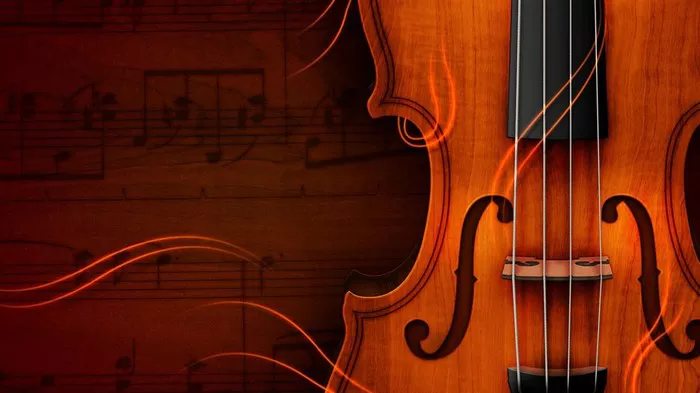Joseph Haydn, a luminary of classical music, stands as one of the most influential composers in history. Often referred to as the “Father of the Symphony” and the “Father of the String Quartet,” his impact on the development of these forms is immeasurable. From his humble beginnings in rural Austria to his esteemed position as court composer for the Esterházy family, Haydn’s journey epitomizes the essence of musical genius and innovation.
Early Life and Education
Born on March 31, 1732, in Rohrau, a small village in Austria, Joseph Haydn displayed an early aptitude for music. His parents recognized his talent and ensured he received a solid musical education. At the age of eight, he was sent to live with his relative, Johann Matthias Frankh, in Hainburg, where he received training in singing, violin, and keyboard instruments.
In 1740, Haydn’s musical abilities caught the attention of Georg Reutter, the director of music at St. Stephen’s Cathedral in Vienna. He accepted Haydn as a chorister, providing him with further musical education and exposure to the vibrant musical scene of Vienna. Although Haydn’s formal education was limited, his experiences in Vienna exposed him to a wide range of musical styles and techniques, laying the foundation for his future compositions.
The Esterházy Years
In 1761, Haydn’s fortunes changed when he was appointed as Vice-Kapellmeister to the court of Prince Paul Anton Esterházy, head of one of the wealthiest and most influential noble families in the Austro-Hungarian Empire. Haydn’s responsibilities included composing music for the court’s various ceremonies, concerts, and theatrical productions. Over time, he rose to the position of Kapellmeister, becoming the principal conductor and composer for the Esterházy family.
During his tenure with the Esterházys, Haydn composed prolifically, producing an extensive body of work that encompassed symphonies, string quartets, operas, chamber music, and oratorios. His compositions reflected the tastes and preferences of his patrons while also showcasing his creativity and mastery of form. Haydn’s time at the Esterházy court provided him with the stability and resources necessary to fully develop his musical talents and experiment with new techniques and styles.
Innovations and Musical Contributions
Haydn’s contributions to the development of classical music are manifold. Perhaps his most significant innovation was the refinement and popularization of the symphony and the string quartet. Prior to Haydn, these forms were still in their infancy, but through his experimentation and creativity, he established the structural framework and expressive possibilities that would define these genres for generations to come.
In his symphonies, Haydn expanded the traditional three-movement structure to include four movements, incorporating elements of contrast and unity to create dynamic and engaging musical narratives. His use of thematic development, harmonic exploration, and orchestration techniques pushed the boundaries of what was possible within the symphonic form, earning him the title of the “Father of the Symphony.”
Similarly, Haydn’s contributions to the string quartet genre were groundbreaking. He composed over eighty string quartets, each showcasing his mastery of form, melody, and texture. Through his experimentation with instrumentation, motivic development, and structural innovation, Haydn elevated the string quartet from a chamber music curiosity to a sophisticated and revered art form, earning him the nickname “Father of the String Quartet.”
Legacy and Influence
Haydn’s influence extended far beyond his own lifetime, shaping the course of classical music for centuries to come. His innovative approach to composition inspired subsequent generations of composers, including Wolfgang Amadeus Mozart and Ludwig van Beethoven, who regarded him with admiration and respect.
Mozart, in particular, held Haydn in high esteem, recognizing him as a mentor and friend. The two composers shared a mutual admiration for each other’s work, and their friendship had a profound impact on their respective musical styles. Mozart’s symphonies and string quartets bear the unmistakable influence of Haydn’s compositional techniques and aesthetic principles, reflecting a deep appreciation for his mentor’s genius.
Beethoven, too, was profoundly influenced by Haydn’s music. As a young composer, Beethoven studied Haydn’s works closely, analyzing his use of form, harmony, and structure. Beethoven’s early compositions, such as his early string quartets and symphonies, exhibit clear echoes of Haydn’s style, albeit infused with Beethoven’s own unique voice and artistic vision.
Conclusion
Joseph Haydn’s legacy as one of the most important figures in the history of classical music is undeniable. His innovative approach to composition, his mastery of form and structure, and his profound influence on subsequent generations of composers have earned him a permanent place in the pantheon of musical greats. From his humble beginnings in rural Austria to his illustrious career as court composer for the Esterházy family, Haydn’s journey is a testament to the power of talent, dedication, and creative vision. As we continue to celebrate and explore his vast musical oeuvre, we honor the enduring legacy of a true musical genius.

